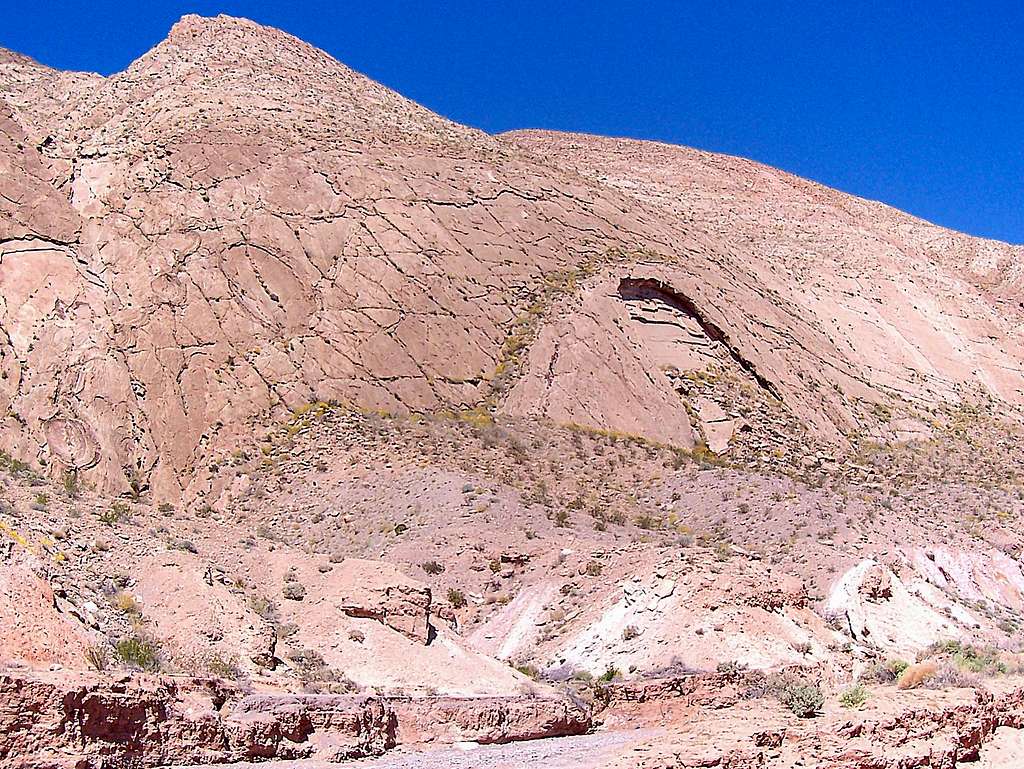
Although hundreds of miles inland, the geology of
the Muddy Mountains region gives a telling glimpse into
its geologic past. About 300 million years ago,
this area was 2,500 feet of sediment at the bottom
of a SHALLOW SEA. Today, this sea floor comprises the
limestone peaks seen throughout this region. (Limestone is a very common sedimentary rock, formed from the remains of all kinds of animals.) Also scattered among these peaks are fossilized sand dunes that have eroded into "mind-bending" galleries and canyons.
I was reading about particular types of caves. Almost 90% of the world's caves are limestone karst caves.
It's true that all "limestone caves" are NOT karst caves, as "karst" only describes the mechanism of how the cave was formed.
What we are looking at here is the possible formation
of a limestone "karst" cave. A characteristic of
limestone is that it's easily dissolved in rainwater.
Rain falls through the atmosphere picking up carbon
dioxide. It hits the Earth's surface and flows downward
into cracks in rock formations, such as fissures and
joints. More carbon dioxide is given off by the
rotting plants and soluable lime in the rocks. This
mixture forms a mild carbonic ACID, which gradually
SEEPS into weakened rocks and dissolves calcium carbonite, the main MINERAL in limestone.
So, are we looking at the beginnings of a new KARST
CAVE in Southern Nevada?? Perhaps in a couple more
thousand years, folks! I won't be here to enjoy it,
as I will probably be ADDING to the content of carbon
dioxide in the atmosphere. Hey, but YOU still might be
here to enjoy a new cave in Southern Nevada! CHEERS!!
Photo taken from Lovell Wash in s. NV, looking
west towards North Las Vegas. (March 31, 2008)







Comments
Post a Comment